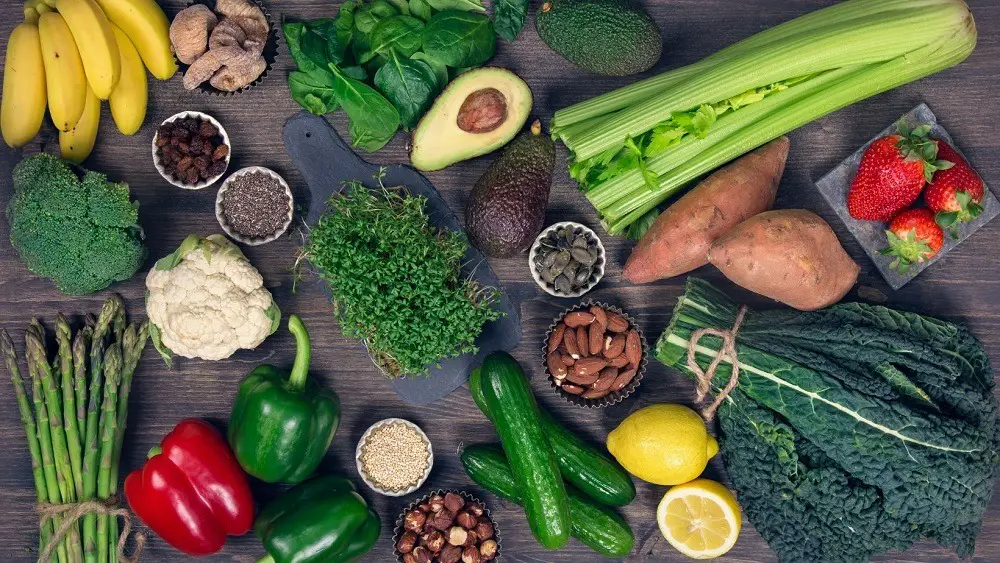If you are interested in learning more about alkaline and acidic foods, then you have come to the right place. You are probably aware of the fact that there are some foods that promote alkalinity and optimal health, but which foods are the ones that you should be aiming to eat and which ones should you be avoiding?
There is always something new to learn about when it comes to your diet’s influence over your health, and hopefully, you are going to learn some new things from this article. We are going to tell you everything you need to know about alkaline foods, and we will also include a handy reference chart for you to look at when you need it.

What is Alkalinity?
pH is what is used to measure a solution’s acidity or alkalinity on a scale of 0-14. Zero is the most acidic, 14 is the most alkaline, and 7 is neutral. Something that you might not have known is that the body actually requires a certain pH in order to function properly. As well as this, each system has to maintain a specific pH so that it can create homeostasis.
A great example of this is the blood, which needs to be kept within the range of 7.36 to 7.44 for the body to be able to function correctly. Another example of this is urine, which is usually between 4.5 and 8.0, and this is a reflection of the toxins and other byproducts of our bodies that our body has to flush from our systems.
When these symptoms are not functioning as they should be, it can put stress on the body, which can lead to an imbalance.
The symptoms that occur from being too acidic can vary, but they can include things like slow digestion, yeast imbalances and fungal infections, as well as viruses, low energy, hormone imbalances, osteoporosis, free radical damage, accelerated aging, weight gain and cardiovascular damage.
In addition to this, stress and natural cellular processes are things that can create acidity in the body, which can make it even more important to fuel and balance the body with more alkaline foods.
What You Need to Know About the Alkaline Foods Chart
Everyone probably knows that we could all do with eating more fruits and vegetables, but there are some plant foods that are non-alkaline forming, and it isn’t necessary to eat only alkaline foods in order to stay healthy. Something else that you should know is that even if a food is acidic, it doesn’t automatically mean that it is unhealthy.
You should be aiming to eat around 80% alkaline foods every day, and the other 20% should be coming from slightly acidic to moderately acidic foods. Foods that are highly acidic should either be avoided or eaten in low quantities and on occasion. You can find out more about where certain foods fall on the pH scale below.
Alkaline Food Guide
This information is a reflection of an approximate rating after being metabolized by the body.
Foods With the Most Alkaline
- Lemon and lime
- Himalayan and sea salt
- 9 + alkaline ionized water
- Watery green vegetables like cucumbers and celery
- Dark leafy green vegetables and cruciferous vegetables like kale, collard greens, spinach, and cabbage
- Sea vegetables and algae like spirulina and chlorella
- Wheatgrass and most sprouts and sprouted grasses
Foods That Are Moderately Alkaline
- Bitter fresh herbs such as parsley and cilantro
- Avocados
- Most other vegetables including tomatoes, bell peppers, green beans, carrots, radishes, onions, ginger, and garlic
- Lettuces
- Almonds and pumpkin seeds
- Green tea
Foods With Low Alkaline
- Raw and unprocessed coconut water and coconut meat
- Most cooked vegetables
- Cauliflower
- Pseudo grains such as buckwheat, quinoa, wild rice, and millet
- Raw and unrefined plant oils like flax, avocado, coconut, primrose, and borage oil
Neutral Foods
- Most tap waters, spring water, and seawater
- Raw goat dairy
- Most olive oils
Foods That Are Slightly Acidic
- Fresh tart berries such as raspberries and blackberries, dates, and figs
- Most sprouted grains and legumes such as soy and lentils
- Most nuts such as Brazil nuts, pecans, and hazelnuts
- Watery fruits like watermelon and melon, grapes, and apples
- Sweet fruits such as mangos, oranges, strawberries, and cherries
- Amaranth, white and brown rice, oats, barley, wheat and other grains
- Most cooking oils such as sunflower oil, grapes oil, canola, and corn oil
- Sweeteners such as honey, maple sugar, and molasses
- Freshwater fish and organ meats
Foods That Are Moderately Acidic
- Dried fruit
- Most coffee
- Most chocolate
- Most mushrooms
- Most cheeses
- Most condiments
- Poultry, eggs, ocean fish, and shellfish
Foods That Are the Most Acidic
- Black tea
- Sugar-sweetened fruit juices
- Sodas
- Alcohol
- Artificial sweeteners
- White sugars
- Refined flours
- Pasteurized dairy
- Other animal protein sources such as pork, veal, and beef
- Most canned foods
